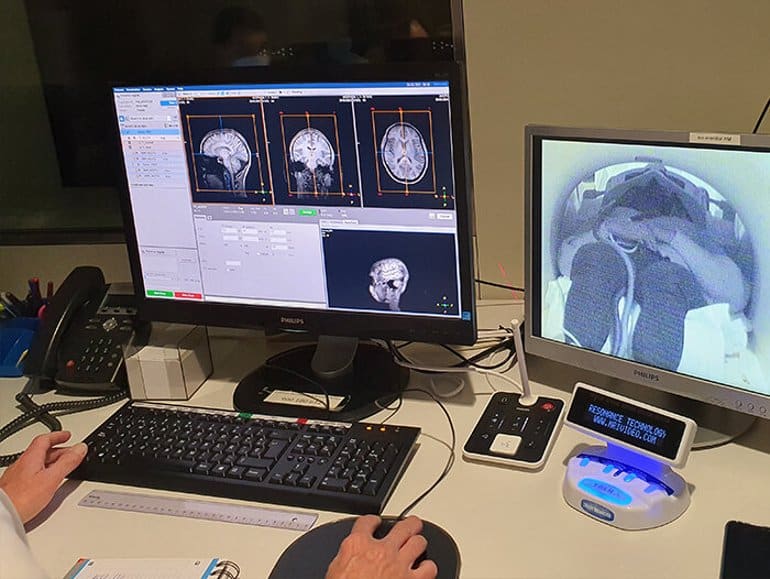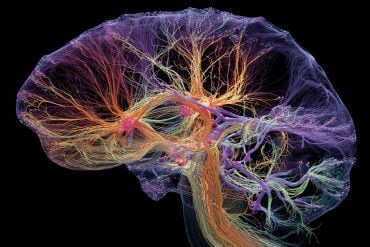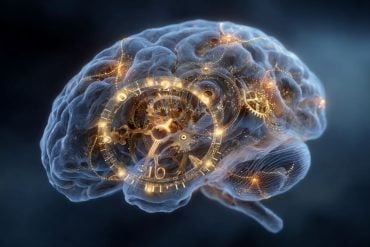Summary: One-minute stimulation with monochromatic light activates several visual and non-visual brain regions. The findings shed light on the impact of light stimulation on brain function.
Source: UPC
A study led by researchers from the UPC’s Terrassa School of Optics and Optometry (FOOT) shows that 1-minute stimulation with blue, green or red light activates several visual and non-visual brain regions.
The study opens new avenues for better understanding the impact of light stimulation on brain function and its use to treat visual dysfunction, depression symptoms, circadian rhythm disruption, migraine and memory or attention disorders.
Growing research in photostimulation indicates that exposure to light can have a positive impact on health-related problems such as spring asthenia, circadian rhythm disruption and even bipolar disorders and Alzheimer’s.
However, the extent and location of changes in brain areas caused by the exposure to monochromatic light remain largely unknown. To move forward in this field, a group of researchers from the Terrassa School of Optics and Optometry (FOOT) of the Universitat Politècnica de Catalunya—BarcelonaTech (UPC) has conducted a pilot study.
They have demonstrated that just one minute of blue, green or red-light exposure modifies the functional connectivity of a wide range of neural networks or visual and non-visual brain regions.
According to the researchers, each one of the brain connectivity pattern appears to be best arranged to perform better on tasks associated with specific cognitive domains: blue-light exposure activates areas associated with attention and circadian rhythm, green-light exposure improves visual attention and red-light exposure influences areas such as memory.
Recently published in the journal Scientific Reports, the study has been coordinated by researcher and FOOT professor Marc Argilés, with the collaboration of students Bernat Sunyer and Silvia Arteche, from the UPC’s doctoral program in Optical Engineering.
Research development
The pilot study involved seven subjects—four women and three men—aged between 21 and 33 receiving 1-minute exposure to one of three wavelengths (blue, green and red), which was done using light exposure instruments lent by the Centre d’Optometria Mataró.

The instruments had been studied and characterized optically (wavelength, irradiance and photon density) at the FOOT, with the collaboration of professor Elisabet Pérez.
Additionally, functional magnetic resonance measurements were performed on the subjects, which allowed the researchers to observe how brain connectivity underwent short-term changes in all participants and in the same brain regions after just 60 seconds of light stimulation.
“We observed a global decrease in functional connectivity (FC) in all the networks but the salience network after blue-light exposure, a global increase in FC after green-light exposure, particularly noticeable in the left hemisphere, and a decrease in FC on attentional networks coupled with an FC increase in the default mode network after red-light exposure,” explain the authors.
“The study opens new avenues for better understanding the impact of light stimulation on brain function and its use to treat not only visual dysfunction, but also depression symptoms, circadian rhythm disruption, migraine and memory or attention disorders,” conclude the researchers.
About this neuroscience research news
Author: Press Office
Source: UPC
Contact: Press Office – UPC
Image: The image is credited to Universitat Politècnica de Catalunya
Original Research: Open access.
“Functional connectivity of brain networks with three monochromatic wavelengths: a pilot study using resting-state functional magnetic resonance imaging” by Marc Argilés et al. Scientific Reports
Abstract
Functional connectivity of brain networks with three monochromatic wavelengths: a pilot study using resting-state functional magnetic resonance imaging
Exposure to certain monochromatic wavelengths can affect non-visual brain regions.
Growing research indicates that exposure to light can have a positive impact on health-related problems such as spring asthenia, circadian rhythm disruption, and even bipolar disorders and Alzheimer’s. However, the extent and location of changes in brain areas caused by exposure to monochromatic light remain largely unknown.
This pilot study (N = 7) using resting-state functional magnetic resonance shows light-dependent functional connectivity patterns on brain networks. We demonstrated that 1 min of blue, green, or red light exposure modifies the functional connectivity (FC) of a broad range of visual and non-visual brain regions.
Largely, we observed: (i) a global decrease in FC in all the networks but the salience network after blue light exposure, (ii) a global increase in FC after green light exposure, particularly noticeable in the left hemisphere, and (iii) a decrease in FC on attentional networks coupled with a FC increase in the default mode network after red light exposure.
Each one of the FC patterns appears to be best arranged to perform better on tasks associated with specific cognitive domains. Results can be relevant for future research on the impact of light stimulation on brain function and in a variety of health disciplines.







